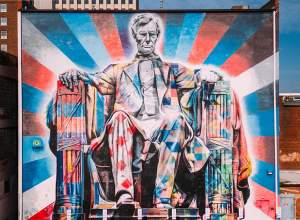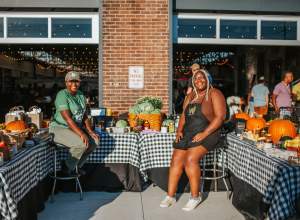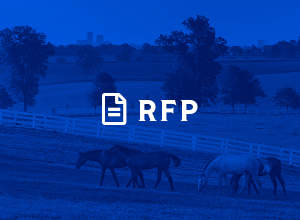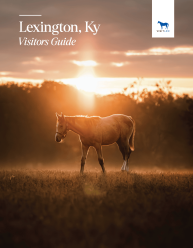To “get a leg up” is when a Thoroughbred’s groom boosts a jockey up upon his horse. Because the jockey rarely meets the horse prior to race day, tips from the groom like “this horse likes the rail” gives the jockey an invaluable advantage. It’s a certain language the jockey and horse speak which makes all the difference between winning and losing.
Fluent in the language of winning, Lexington, Kentucky is known as the Horse Capital of the World. And, as any winner will tell you, they’ve failed more than they’ve won. But, land sakes alive, winning sure does feel divine.
Lord knows why it took me so long, but it was a frosty morning the day I first visited Keeneland. Fall Meet was in full swing. The trees lining the entrance had just begun to turn a most brilliant red. I could hear the planes in the near distance as they approached the Blue Grass Airport just across Versailles Road. Soon, the pentameter of Thoroughbred hooves took over my airspace, along with the sheer force of horsepower during that morning’s workout.
Spanning more than 1000 acres, the finest track in all of the world is front and center. The vastness is by design to protect not only history, but also Keeneland’s jaw dropping views. While there’s a high profit for tobacco, which was once the crop raised onsite in the late 1700s, John Oliver Keene raised the stakes more than a bit when he declared raising horses was the way to go. It was the dawn of the 20th century. Prohibition was knocking on Bourbon Country’s front door, meanwhile Keene was onto something big.
As he began building without a mere mention of blueprints, his demise was met by micromanagement and the looming Great Depression. Still, his vision persisted as a team of professionals and an association of horse farmers took the reins. Keeneland opened with its first race in October of 1936. To become a winner, it takes stamina and perseverance to master this powerful language. I was determined to at least be conversational.
For starters, Thoroughbreds are trained on the main track daily by exercise jockeys, many of whom are females. I’m told by my guide, Steve Benigar that they can weigh up to 120 pounds which may not seem like a lot, but it’s meant to lighten the load on race day with professional jockeys weighing in at less than 110 pounds. The horses begin racing at 2 years of age and “are bred to have Don Knotts legs and an Arnold Schwarzenegger chest,” Benigar laughs. He points to the paddock made from recycled car tires just prior to the track’s entrance. Here the horses take a leisurely stroll each morning just to get used to things prior to exercising. The horses are often high strung and ready to go. They almost prance sideways at times, much to their trainers’ chagrin. “A Thoroughbred can’t win running sideways,” Benigar winks. He says that’s why trainers love it when visitors come out to the track so that the horses can get used to people without distraction.
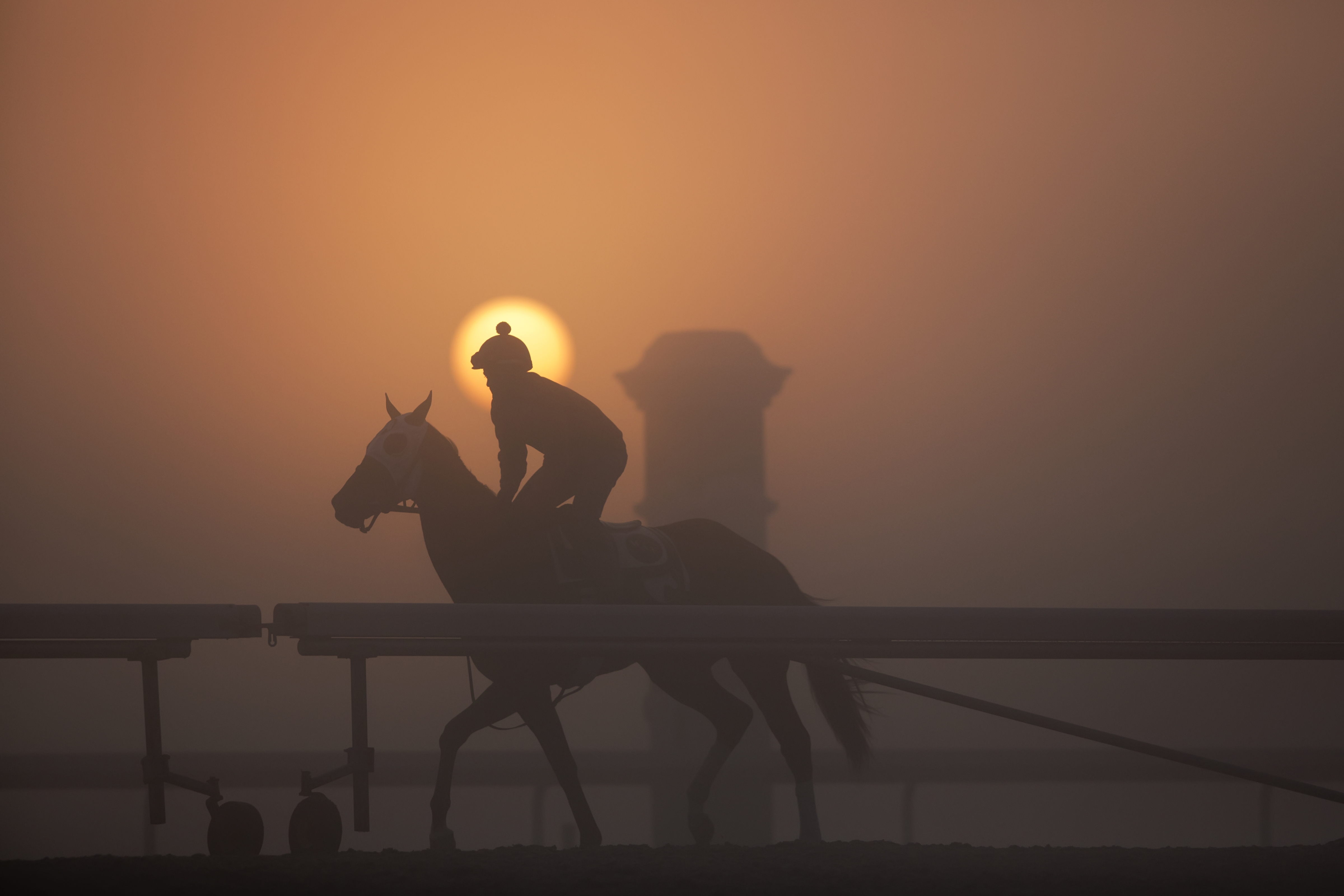
As I talk with Benigar, I hear a horse huffing out on the track. He laughs, “That horse could never win in that condition.” Just like humans, they have to condition themselves to be winners. Once they’re up for the task, the trainer will let them go ahead and “breeze.” That’s when they’ll run wide open at speeds upwards of 40 MPH on the 8.5-furlong track. If the horse breezes the entire track, it’s another 10 days before he can run that fast again. Training days start around 4am and are easily 12-hour days of exercising multiple horses.
You can see these tenacious trainers and horses in action any given morning and free of charge from 6 a.m. to 10 a.m. Afterwards, explore the rest of the complex, as it’s an all-access pass kind of experience. Take a stroll just beyond the stables about a half mile to the Track Kitchen where you can grab a meal or snack. You’ll most likely spot some of the trainers and handlers taking their breaks here.
As for the professional jockeys, this sport is considered one of the most dangerous due to the four-legged athletes’ demeanor upon which they are perched. “Sometimes the horse rears up and the jockey goes with them. We always hope that the jockey is still in the saddle when the horse comes back down, but that doesn’t always happen,” says Benigar. It’s a risk they’re willing to take, as the career can be quite lucrative.
“Jockeys aren’t that short when they stand on their own money,” Benigar says with a smile. They are guaranteed $100 per race which could lead to about $10,000 per month––an average earning. “The 10% percenters” are what the high earners are called, which means they take 10% or the horse’s winnings. Considering the average daily purse can be close to $1,000,000 the math is self-explanatory.
Keeneland hosts races each April and October for the highly anticipated Spring and Fall Meets. Gates open at 11 a.m. with races beginning at 1 p.m. every day except Monday, Tuesday and Easter Sunday.
Every race starts with horses coming into the U-shaped caves called the “Saddle Paddock.” When they are in the cave their ID number is checked. That number is tattooed under their upper lip. The groom will walk the horse out where spectators can watch “their horse” before placing the minimum $2 bet.
I used a different system of betting by letting the horse’s name lead my decision and it paid. “Overthinking” won me a whopping $18 which I promptly turned into zero on my next bet. You can bet on your favorites either in person, or even on your mobile device. Check out the easy-to-follow directions over on the Keeneland site.
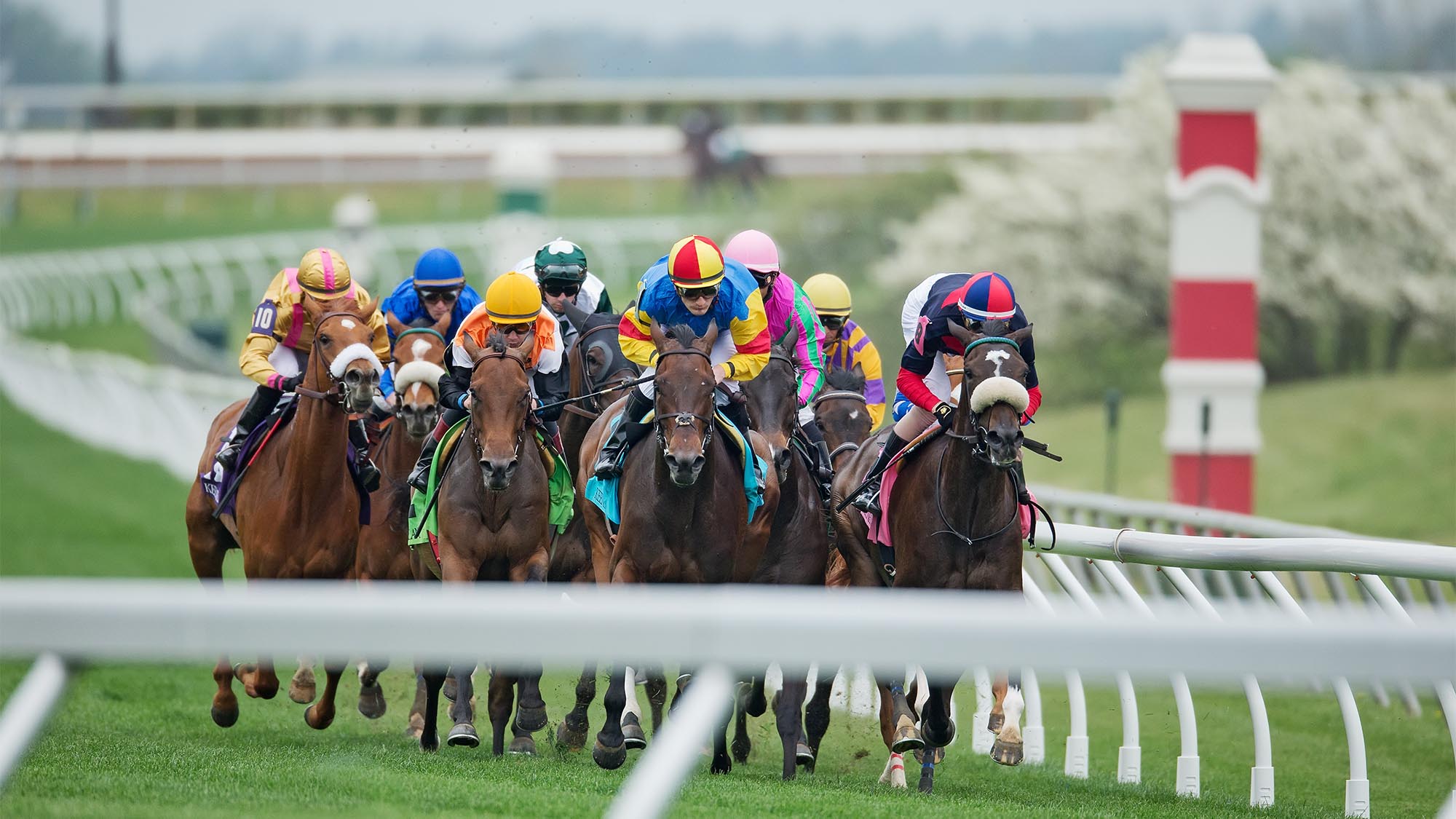
Between races, guests are invited to come right up to the rails to love on the “handler horses.” Make sure to load up on hard candies—these sweet-toothed professionals can hear the plastic wrappers rattle in your pocket far away and will easily pony up for the affection.
Prior to arriving, check #KeenelandTraffic on Twitter for race day traffic and parking updates, as it gets pretty crowded. Located at Gate 4, The Hill is a popular hang for tailgaters each Friday and Saturday. You can hitch a free shuttle ride to the Grandstand area. Tickets to the race start at $5, but you can up the ante and feel like the high roller you were born to be with reserved seating and a buffet spread fit for the win in the Grandstand luxury accommodations. (from $55.)
It’s important to know that unlike other races, guests are never allowed infield. Having never been to one of those other races, I can’t vouch for the particular parties that might commence. This crowd orders their bourbon from the bartender at the Pavilion Bar, not from the flask shoved down their pants–– so I’m told, anyhow.
If you go to Spring or Fall Meet, declare the infamous Sycamore tree in the middle of the paddock as your group’s home base, as there are nearly 20,000 daily attendees on average.
When translating the language of winning, you don’t have to look far. Just beyond the Grandstand is the world’s leading Thoroughbred auction house where four annual sales are hosted. Most of the Thoroughbreds on planet earth are actually sold in that sales building and it is visited by people from around the world. You can see for yourself how the world economy works real-time and free of charge. Just so you know, if you’re looking to buy and sell Thoroughbreds, one million dollars may not even get a hoof in the trailer.
Lexington is the birthplace of Triple Crown winners American Pharaoh and Justify. Both Thoroughbreds will never race again, as they now earn upwards of $1,000,000 per day breeding mares. You might say this is the vernacular in which the language of winning is spoken. Yet to learn its origin, you must go to a nursery farm where the mothers and babies live.

Mill Ridge Farm is the mother of all mothers when it comes to horse nursery farms. That’s because it’s rooted in one determined woman’s vision. That woman is Alice Headley Chandler. When her father, Hal Price Headley, died in 1962, he willed her four mares and 286 acres. She would breed from that stock a world champion by the name of Sir Ivor, making her the first woman to ever breed an Epsom Derby winner. And, that was only at the beginning of her career.
She’d go on to defy the industry’s seemingly patriarchal hierarchy by becoming the president of the Kentucky Thoroughbred Association, among other high-profile leadership roles. Her son, Headley, learned from the best and started Nicoma Bloodstock in 1979 as a full-service bloodstock agency. The horses from Mill Ridge Farm literally come from Bluegrass terroir as they spend the first two years of their lives outside running and playing like four-legged toddlers should.
Services at Mill Ridge include boarding, sales representation, stallions and bloodstock consulting. Without farms like Mill Ridge, the language of winning would never evolve in the world of Thoroughbreds. Just minutes from Keeneland and Bourbon Country, book a 90-minute tour of Mill Ridge Farm through the non-profit agency—Visit Horse Country.
When learning a new language, it’s about practice and regular interaction. Surrounded by the pristine beauty of Horse Country and the willful determination at Keeneland, how could losing ever be an option?
Upon my first visit, I had come to Keeneland to learn of history, tradition and maybe a few stories of hats and bowties. Preconceived notions of pomp and circumstance mixed with pretentious ideology is what I believed to be true about this business of horses, racing and such. What I left with was a new-found appreciation for the business of horse farming and its relevance to our world which transcends any track with the language of winning.

